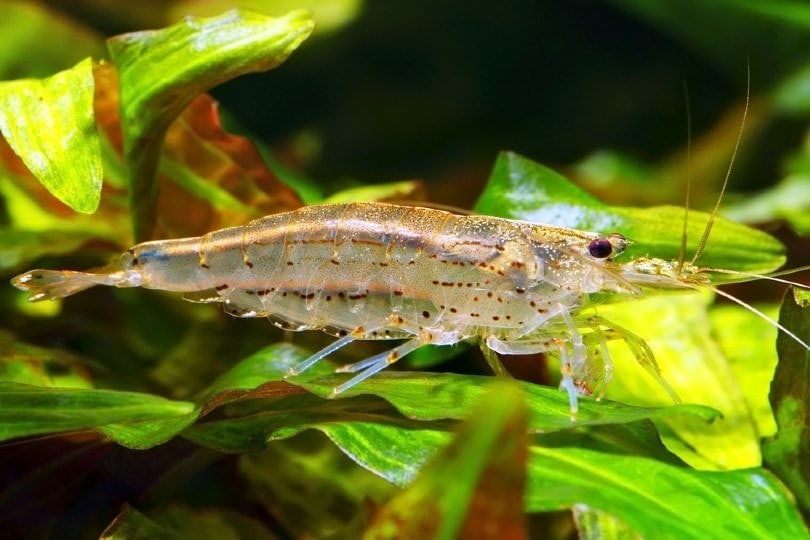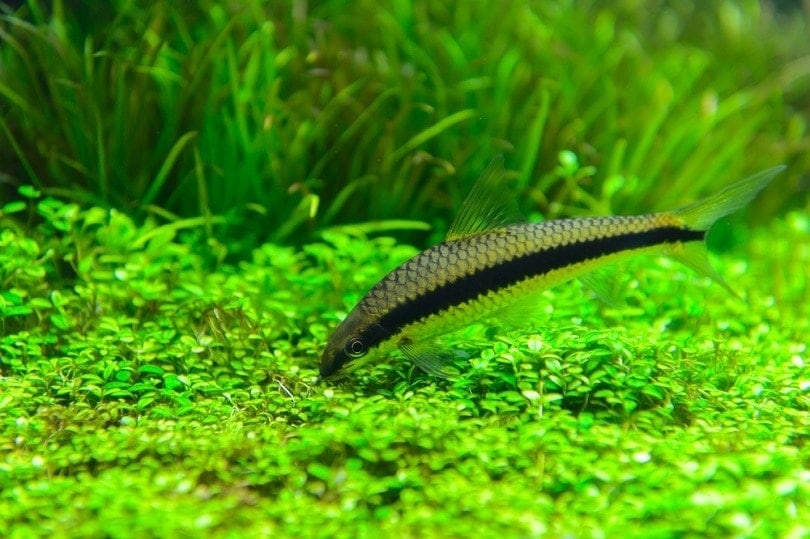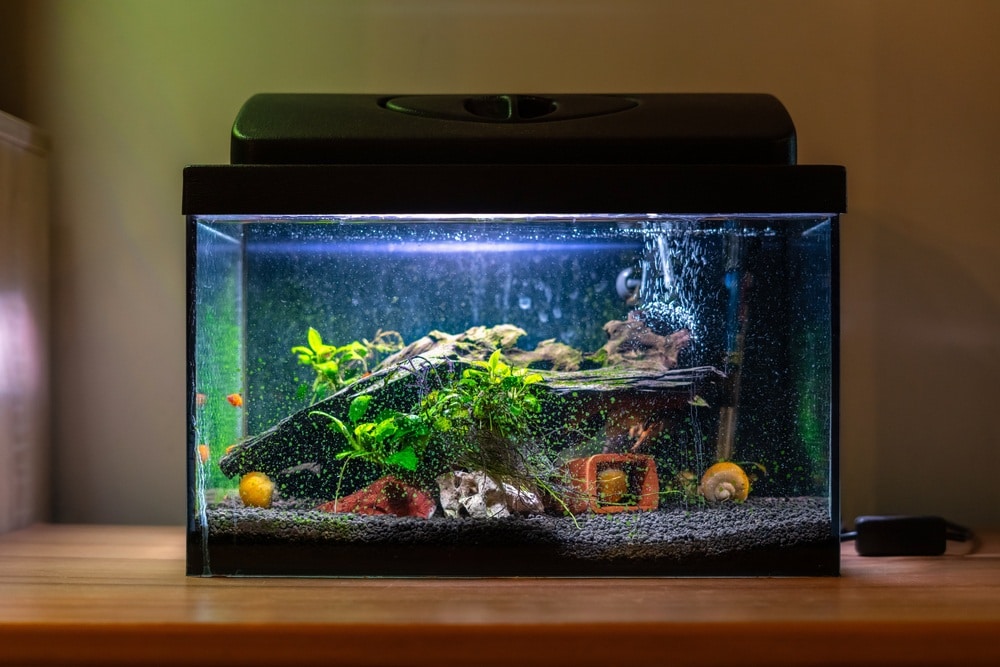10 Great Tank Mates for Arowanas: Compatibility Guide 2024
Updated on
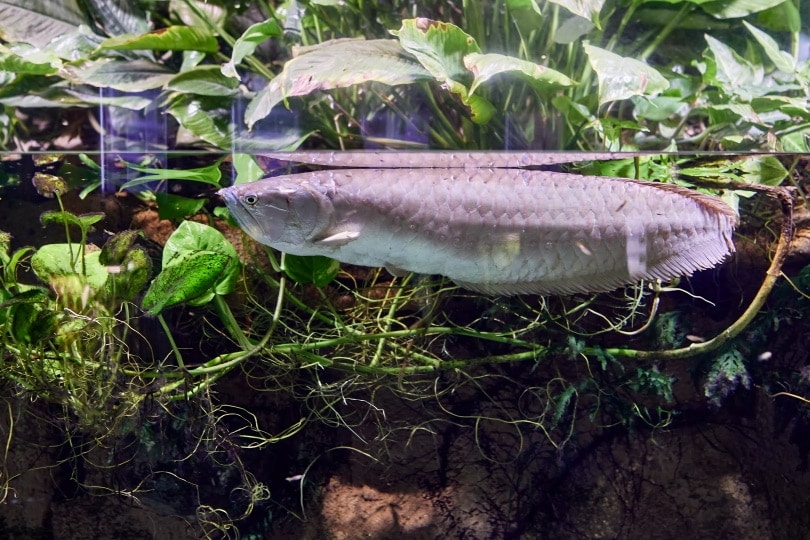
Silver arowanas are beautiful fish that can easily steal the show in any aquarium, but finding tank mates for them isn’t always easy. These fish are generally laid back but can be aggressive and territorial, not to mention they get quite large. Silver arowana tank mates should be hardy fish that will safely live with the arowana.

The 10 Great Tank Mates for Arowanas
1. Jaguar Cichlid
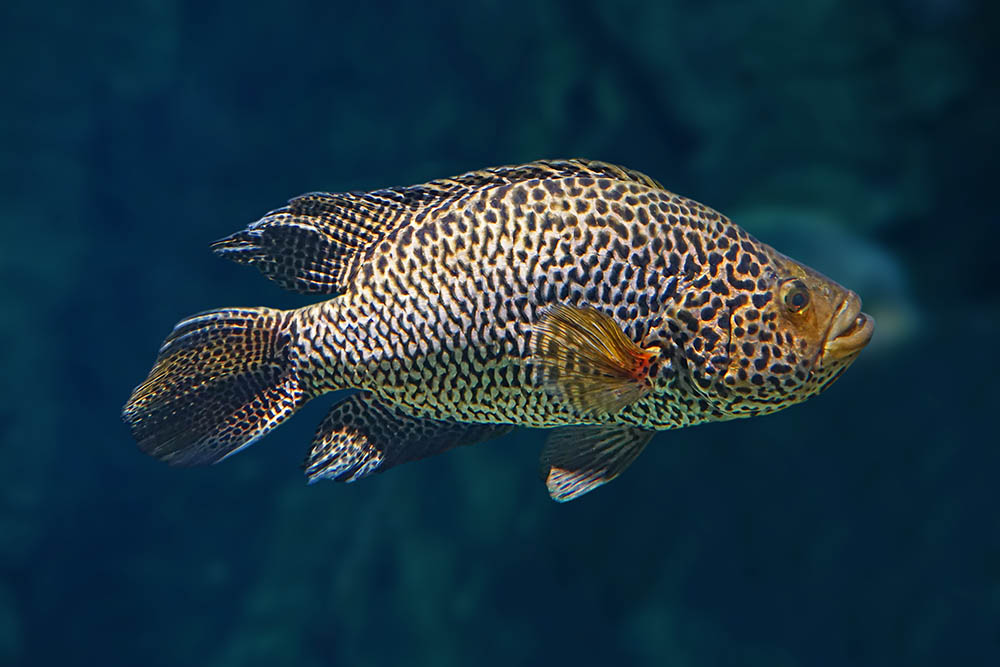
| Size | 16–24 inches (40–61 cm) |
| Diet | Carnivore |
| Minimum tank size | 75 gallons (284 liters) |
| Care Level | Difficult |
| Temperament | Aggressive, territorial |
The jaguar cichlid is a large fish that will hold its own against an arowana. These carnivorous fish require exceptionally large tanks, with 75 gallons being the minimum recommendation for a single fish but 100 gallons or larger generally being preferred. They need plenty of space to claim territory to prevent high levels of aggression. When sharing a tank with an arowana, the tank will need to be quite large.
2. Red Belly Pacu – Best for Extra Large Tanks
| Size | 12–36 inches (30–91 cm) |
| Diet | Herbivore |
| Minimum tank size | 200 gallons (757 liters) |
| Care Level | Difficult |
| Temperament | Peaceful |
The red belly pacu is a fascinating fish that closely resembles its relative, the piranha. However, pacus are overall peaceful fish that are primarily herbivorous. They can reach up to 3 feet in length, and it’s recommended that you keep a tank of at least 200 gallons for a single pacu. For a group, a massive tank or a pond is a requirement. This fish will defend itself if needed against an arowana, but it will not seek out a fight.
3. Clown Loach
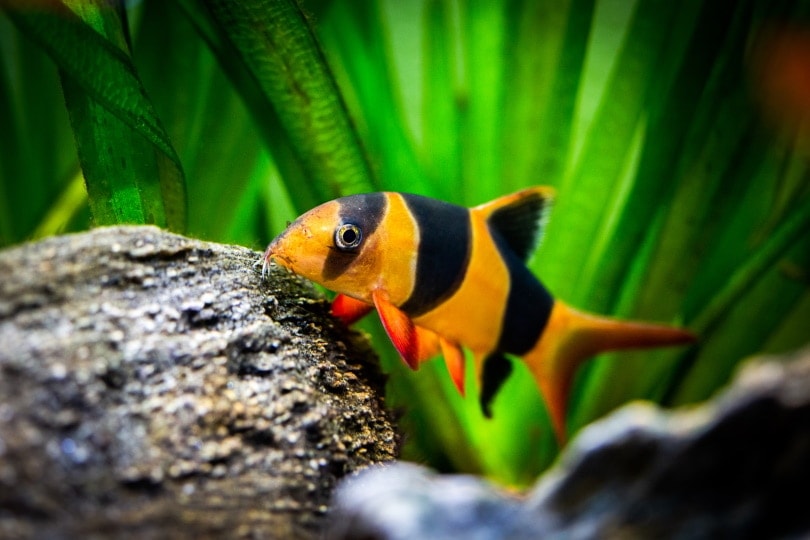
| Size | 6–12 inches (15–30 cm) |
| Diet | Omnivore |
| Minimum tank size | 55 gallons (208 liters) |
| Care Level | Moderate |
| Temperament | Peaceful |
The clown loach is a peaceful fish that features bright yellow colors, making it an eye-catching fish. They can reach up to 1 foot in length and are happiest in groups. The more clown loaches you keep, the more active they will be. They are generally nocturnal fish that stay in the lower part of the water column, so they’re unlikely to encounter the arowana in the tank.
4. Common Plecostomus
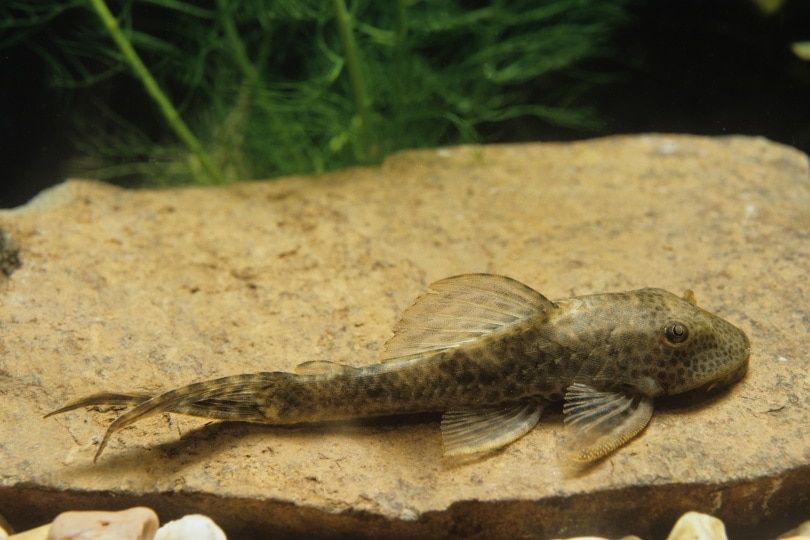
| Size | 15–24 inches (38–61 cm) |
| Diet | Omnivore |
| Minimum tank size | 75 gallons (284 liters) |
| Care Level | Moderate |
| Temperament | Peaceful but may be territorial |
The common plecostomus is frequently sold to people who don’t realize how large these fish can get, causing many of these fish to end up in inappropriate tanks. They can reach around 2 feet in length, though, and require a tank that is at least 75 gallons, but larger is preferred. They are not as good at eating algae as many people think, and they create a heavy bioload in the tank. They are typically peaceful but may develop territorial tendencies with age. Their armored bodies mean they’re protected from attacks by other fish.
5. Silver Dollar Fish
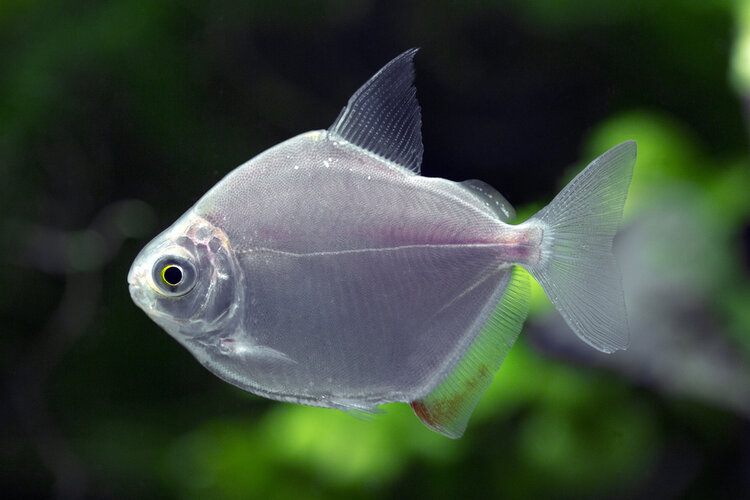
| Size | 6–8 inches (15–20 cm) |
| Diet | Omnivore |
| Minimum tank size | 75 gallons (284 liters) |
| Care Level | Medium |
| Temperament | Peaceful |
The silver dollar fish is happiest in shoals, so be prepared to keep a group of them. Watching a shoal of them shimmer around a tank brings a lot of brightness and interest to the tank. They spend the majority of their time in the middle portion of the tank, so they won’t come into contact with the arowana very often. They are smaller than most arowana tank mates, but generally, adults are still too large to be eaten.
6. Jack Dempsey Cichlid
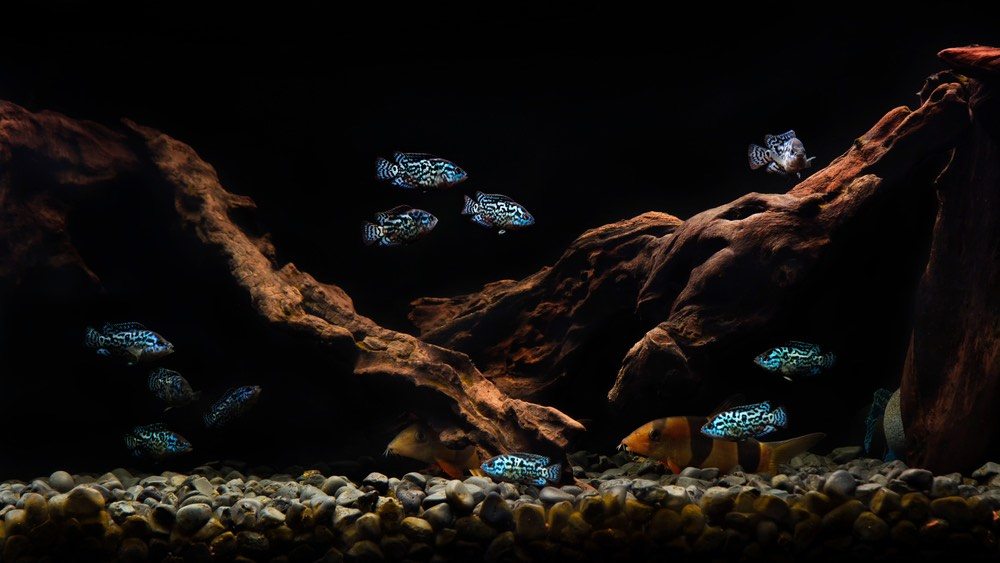
| Size | 7–10 inches (17–25 cm) |
| Diet | Carnivore |
| Minimum tank size | 75 gallons (284 liters) |
| Care Level | Medium |
| Temperament | Aggressive |
The Jack Dempsey cichlid is named for its similarity in appearance and temperament to the boxer Jack Dempsey. These fish are territorial, aggressive, and have an overall bad rap. They are carnivores that will eat tank mates, but they don’t reach sizes nearly large enough to be a problem for your arowana. They need a tank that is at least 75 gallons, but like most cichlids, bigger tanks are better.
7. Green Terror Cichlid
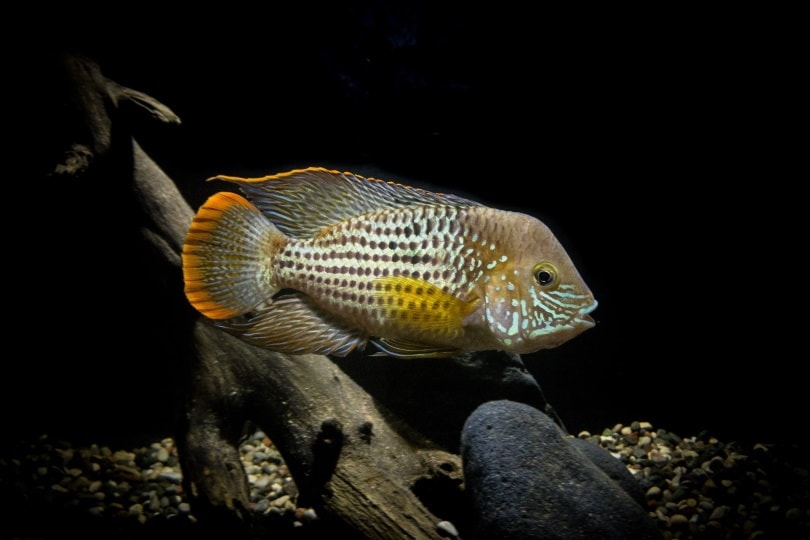
| Size | 6–12 inches (15–30 cm) |
| Diet | Omnivore |
| Minimum tank size | 50 gallons (189 liters) |
| Care Level | Medium |
| Temperament | Aggressive |
The green terror cichlid is another cichlid with a bad rap for aggression, but with enough space, these fish will typically leave their tank mates alone. The 50-gallon tank minimum is for a single green terror cichlid kept alone, so plan for a large tank to hold these large fish. They are primarily carnivorous but are opportunistically omnivorous, so make sure to feed them a healthy, varied diet.
8. Oscar
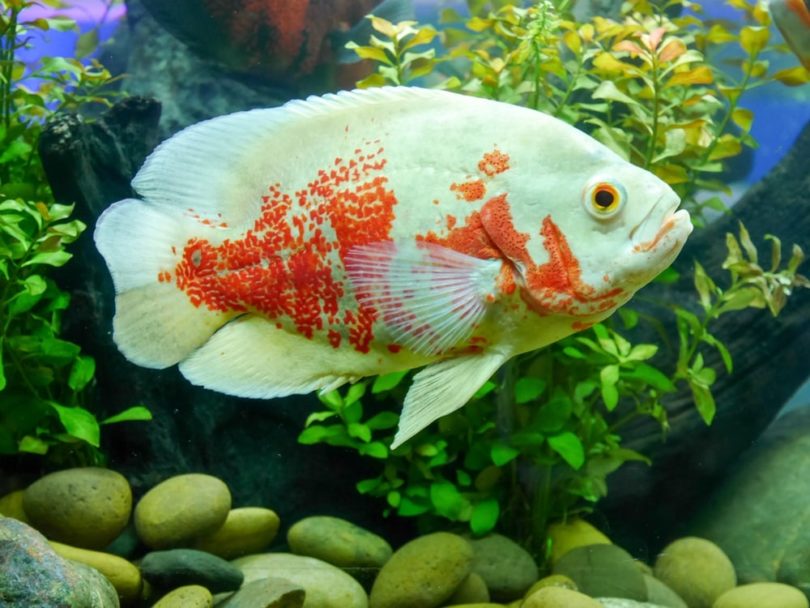
| Size | 10–18 inches (25–46 cm) |
| Diet | Omnivore |
| Minimum tank size | 75 gallons (284 liters) |
| Care Level | Medium |
| Temperament | Aggressive |
The oscar is another fish that is routinely sold to people who are grossly underprepared for their care and necessary tank size. A 75-gallon tank may be acceptable for an oscar or two, but bigger is best. These are a variety of cichlid and have the same temperament as most others. They are territorial and aggressive. They are omnivores that should be offered a varied diet to stay healthy.
9. Redtail Catfish
| Size | 36–72 inches (91–183 cm) |
| Diet | Omnivore |
| Minimum tank size | 1,500 gallons (5,678 liters) |
| Care Level | Difficult |
| Temperament | Territorial |
If you thought arowanas aren’t for the faint of heart, then you should meet the redtail catfish. These enormous fish are considered “tank busters,” which is a group of fish that typically outgrow traditional aquarium options. If you have the space for a ridiculously oversized tank, then the redtail catfish may be a good option to keep with your arowana. However, considering they can reach sizes almost as large as an adult human, think very carefully before bringing one home.
10. Ornate Bichir
| Size | 18–24 inches (46–61 cm) |
| Diet | Carnivore |
| Minimum tank size | 90 gallons (341 liters) |
| Care Level | Medium |
| Temperament | Semi-aggressive |
If you’re looking for something a little more prehistoric, then look no further than the ornate bichir. They are so ancient, in fact, that many consider the fish of their genus, Polypterus, to possibly be the “missing link” between fish and amphibians. They are semi-aggressive fish, so they generally won’t go out of their way to cause problems. They can be fussy eaters and generally will only eat live or thawed frozen foods, so be prepared to work with this fish when it comes to mealtime.

What Makes a Good Tank Mate for Arowanas?
The ideal tank mate for an arowana is a large fish or group of fish that spend most of their time in other places in the tank than the upper water column. Bottom feeders and middle dwellers are great options because they usually stay out of the way. Fish that are sturdy enough to withstand any snaps that may come from the arowana are most likely to be successful tank mates.

Where Do Arowanas Prefer to Live in the Aquarium?
They spend almost all of their time near the surface of the water hoping to find food. In the wild, arowanas eat small fish and other animals that are in the upper water column or on the water’s surface. They are known to eat frogs, insects, and even small birds and mammals that come into their space.
Water Parameters
In the wild, silver arowanas usually live in the floodplains of the Amazon River. They prefer a scarcely planted tank with plenty of room for swimming and hunting. A functional heater is necessary for an arowana’s tank, and considering they require a tank that is, at minimum, 150 gallons, you’ll likely need multiple heaters to keep the water at their preferred range of 72–82˚F. Slightly acidic to neutral pH levels from 6.5–7.5 are ideal.
Size
Arowanas are tank busters, reaching 3–4 feet in length. They usually stay closer to 3 feet in captivity, though. They are powerful fish that can propel themselves out of the water to catch prey, so ensure your tank is equipped for the size and needs of this fish.

Aggressive Behaviors
When it comes to aggression, silver arowanas are one of the top predators in the aquatics trade. They will eat smaller tank mates, especially those that spend time in the upper water column. However, they are truly semi-aggressive fish and will not go looking for a fight with tank mates. In fact, they can be quite timid and shy and will swim away if startled.
Top 2 Benefits of Having Aquarium Tank Mates for Arowanas
- Cleaning Crew: Arowanas spend almost all of their time near the water’s surface, so they’re not going to be cleaning up the bottom of the tank anytime soon. Choosing tank mates that will eat algae, detritus, and fallen food from the lower portions of the tank will help you maintain the cleanliness of the tank.
- Fill the Tank: If you’re wanting your tank to be lively and interesting beyond having an Arowana in it, then choosing tank mates that bring color and movement to your tank, like clown loaches and silver dollar fish, will help liven and brighten things up.

Final Thoughts
The arowana isn’t an easy fish to keep and finding tank mates can seem like an impossible task. Their penchant for eating tank mates and their ability to do serious damage in a fight means they need large, sturdy tank mates. There are lots of great options available in the aquatics trade, especially if you can invest in a huge tank. The more space you provide your arowana, the more success you’re likely to have with adding tank mates. Space helps reduce territorial aggression and helps all the fish in the tank feel safe, even your dangerous but timid arowana.
Featured Image Credit: Grigvovan, Shutterstock
